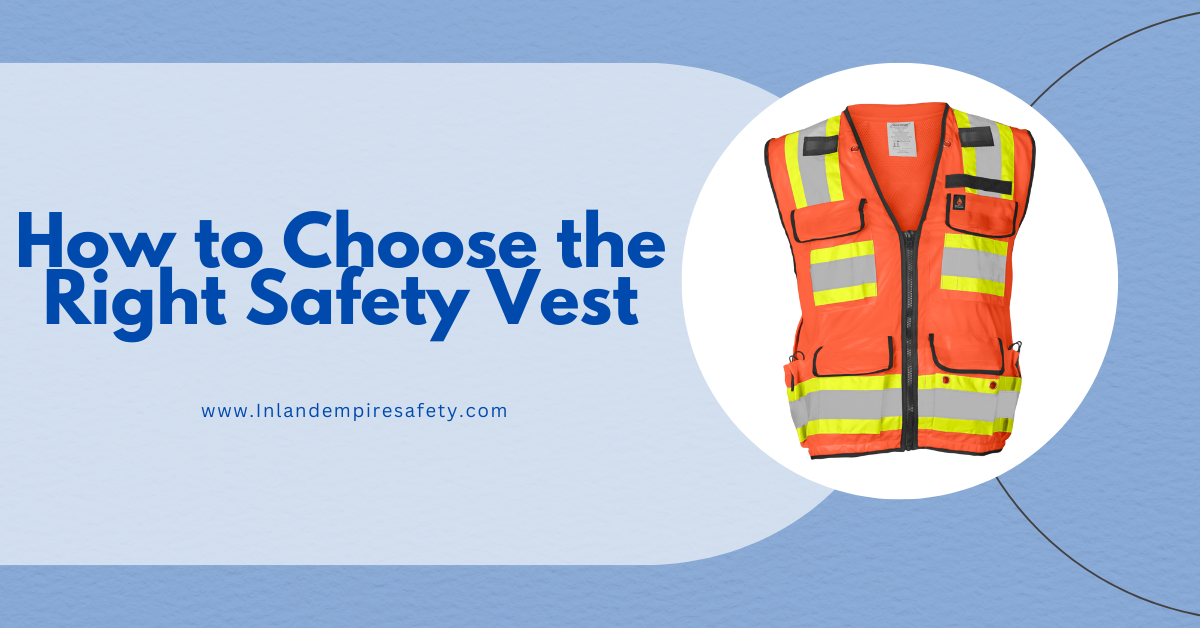
How to Choose the Right Hi-Vis Safety Vest for Maximum Protection
Safety vests are more than just a piece of clothing; they are a critical safety measure in various industries. Whether you are on a construction site, directing traffic, or working in low-visibility conditions, a safety vest can be the difference between safety and danger. This comprehensive guide will delve into the uses of safety vests, differentiate between Class 1, 2, and 3 safety vests, and explore OSHA rules to ensure you remain compliant and safe.
Why are Safety Vests Important?
Safety vests play a vital role in ensuring the safety and visibility of workers in various industries. From construction sites to traffic management, these vests are designed to prevent accidents and enhance the safety of individuals by making them easily visible in low-light and high-traffic conditions.
What is the Use of a Safety Vest?
Enhanced Visibility
The primary use of a safety vest is to enhance the visibility of the wearer. Made with high-visibility materials like fluorescent fabrics and reflective strips, safety vests ensure that workers are seen even in low-light conditions, reducing the risk of accidents.
Protection in Hazardous Environments
Safety vests are essential in hazardous environments where visibility is crucial for preventing accidents. They are commonly used in construction, roadwork, and emergency response situations where workers need to be seen clearly to avoid being hit by vehicles or machinery.
Identification and Role Clarification
Safety vests also help in identifying workers and their roles on a job site. Different colors and designs can denote different roles, such as supervisors, first responders, or specific teams, facilitating better organization and communication.
What is the Difference Between Class 1, 2, and 3 Safety Vests?
Class 1: Class 1 vests are suitable for low-risk environments. They typically feature a minimal amount of reflective material and are used by parking attendants, warehouse workers, and delivery drivers.

Hi-Vis Green Mesh Safety Vest - One Size Fits All
Class 2: Class 2 vests are used in environments with higher traffic and potential hazards. They have more reflective material compared to Class 1 vests and are used by road workers, construction crews, and airport ground crews.

Class 2 Flame Retardant Surveyor Safety Vest (Hi Vis Orange)
Class 3: Class 3 vests are designed for the most hazardous environments. These vests provide the highest level of visibility with extensive reflective material and are used by highway workers, emergency responders, and heavy equipment operators.

Class 3 Flame Retardant Safety Vest with Zipper Front and Sleeves
OSHA Rules for Safety Vests
The Occupational Safety and Health Administration (OSHA) mandates the use of high-visibility clothing for workers exposed to public vehicular traffic or construction equipment. These regulations are in place to ensure worker safety and reduce accidents.
OSHA provides specific guidelines for different industries. For example, in the construction industry, OSHA requires the use of reflective vests for all workers exposed to traffic or moving machinery. Similarly, in the road construction industry, all workers must wear Class 2 or 3 vests to ensure maximum visibility.
To comply with OSHA regulations, ensure that safety vests meet the ANSI/ISEA 107 standards for high-visibility safety apparel. Regularly inspect vests for wear and tear, and replace them as needed. Training workers on the importance of wearing safety vests and how to properly use them is also crucial for compliance.
